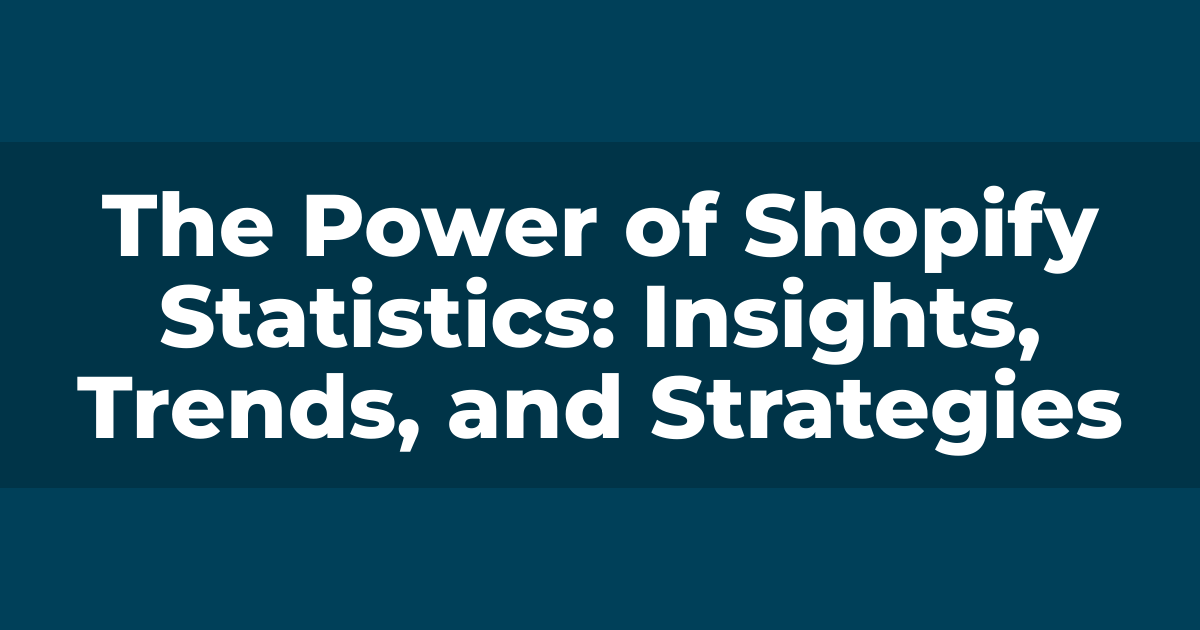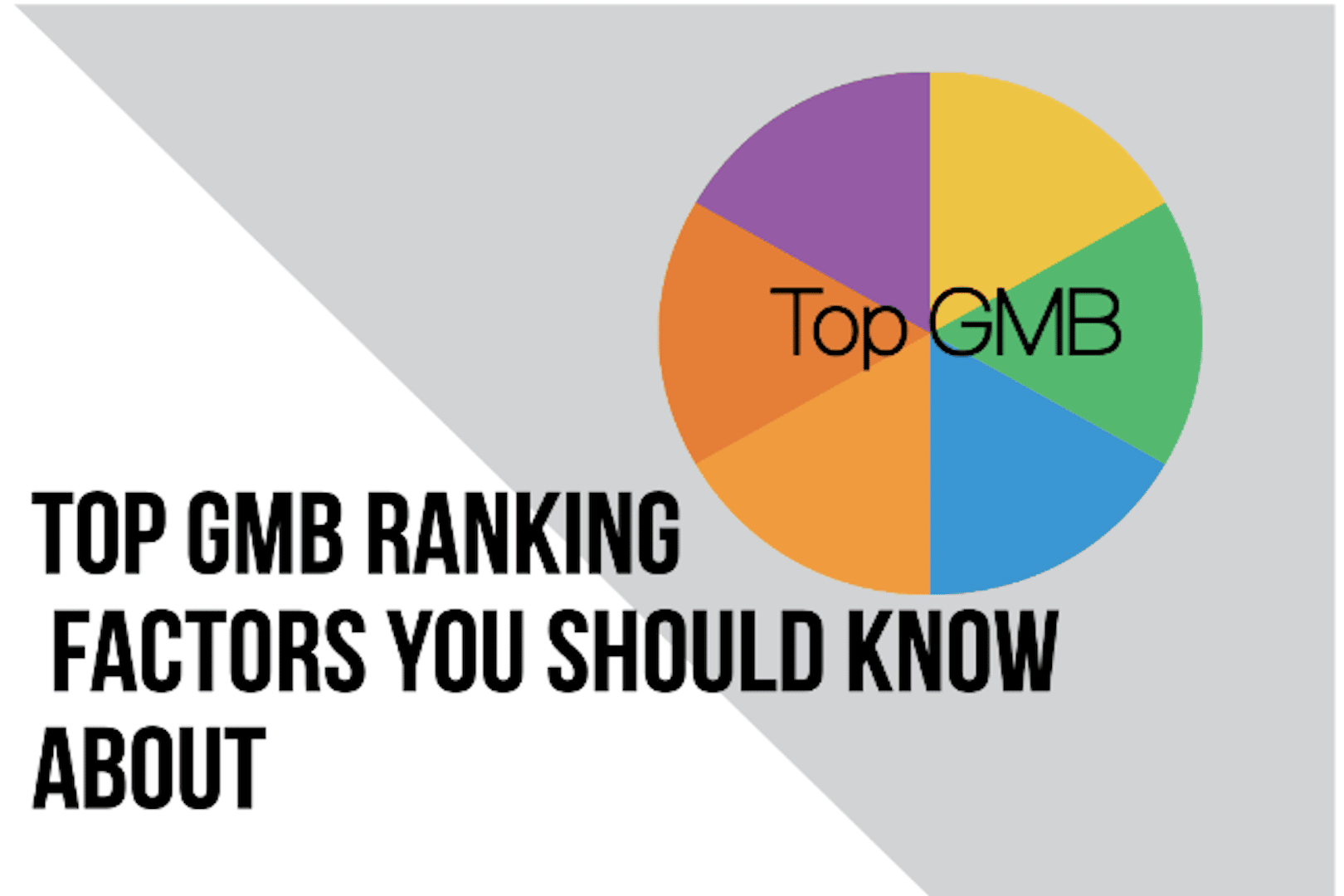As ecommerce grows and evolves, businesses must stay ahead of the curve to remain competitive. Shopify, the popular ecommerce platform, is essential for businesses looking to establish and grow their online presence. However, simply having a Shopify store is not enough – businesses must also make data-driven decisions to succeed in the competitive ecommerce landscape. This is where Shopify statistics come in – these insights and metrics give businesses valuable insight into their customers, sales, and can answer the question is Shopify worth it?
By analyzing Shopify statistics, Shopify merchants can gain valuable insights into their ecommerce operations and make data-driven decisions to optimize their strategies and boost their bottom line. This article will explore the key Shopify statistics and metrics businesses should track, the benefits of analyzing this data, and best practices for utilizing this information to improve ecommerce performance.
Key Shopify Statistics and Metrics to Track
Tracking key Shopify statistics and metrics is crucial for businesses to understand their ecommerce performance and make data-driven decisions. Here are some of the essential Shopify statistics and metrics businesses should be tracking:
Sales and revenue metrics
This includes metrics such as total, net, gross, and sales by channel. These metrics provide insight into the overall performance of the business and help identify areas for improvement.
Traffic and conversion rates
Tracking website traffic and conversion rates are essential for understanding the effectiveness of marketing campaigns and website optimization efforts. The Shopify platform gives you metrics to track such as total website visits, unique visitors, bounce rate, and conversion rate.
Average order value (AOV)
AOV refers to the average amount spent by a customer per order. This metric is valuable for identifying trends in customer spending behavior and can be used to inform pricing and promotional strategies. This metric makes things easier for Shopify sellers.
Customer acquisition cost (CAC) and customer lifetime value (CLV)
CAC refers to the cost of acquiring a new customer, while CLV refers to the total value a customer will bring to the business over their lifetime. Tracking these metrics helps businesses understand the effectiveness of their marketing and customer retention efforts. This can also be seen in Shopify apps.
Abandoned cart rate
The abandoned cart rate measures the percentage of customers who add items to their cart but don’t complete the purchase. This metric provides insight into potential barriers to conversion and can be used to optimize the checkout process. A great way to check the average Shopify store revenue that can potentially be saved.
Referral sources and social media metrics
The global ecommerce market is huge. Tracking referral sources and social media metrics can help businesses understand where their traffic is coming from and which marketing channels are most effective. Metrics to track include social media engagement, referral traffic, and conversion rates by source.
By tracking these essential Shopify statistics and metrics, businesses can gain valuable insights into their ecommerce performance and make data-driven decisions to improve their bottom line.
Benefits of Analyzing Shopify Statistics
Analyzing Shopify statistics has numerous benefits for businesses looking to improve their ecommerce performance.
Here are some of the key benefits:
Improved decision-making and strategy development
Shopify statistics provide businesses with valuable data that can be used to make informed decisions and develop effective strategies. By analyzing sales trends, customer behavior, and website performance, businesses can identify areas for improvement and develop strategies to optimize their operations.
Enhanced customer targeting and segmentation
By tracking metrics such as customer acquisition cost and lifetime value, businesses can better understand and target their customers more effectively. This information can be used to develop targeted marketing campaigns and personalized customer experiences.
Increased website and product optimization
Shopify statistics can provide insights into website performance, including traffic and conversion rates, bounce rates, and average order value. This information can be used to optimize website design, navigation, and product offerings to improve the overall customer experience and drive sales.
Enhanced marketing and advertising campaigns
Businesses can identify the most effective marketing channels by tracking referral sources and social media metrics and adjust their marketing strategies accordingly. This can help businesses maximize their marketing budget and drive more targeted traffic to their website.
Improved inventory management and fulfillment processes
Shopify statistics can provide insight into product performance and inventory levels, allowing businesses to optimize their inventory management and fulfillment processes. This can help businesses reduce inventory costs, improve order accuracy, and enhance customer experience. To further improve inventory management, the WMS systems should come into play.
How to Access and Analyze Shopify Statistics
Shopify provides businesses with built-in analytics and reporting features to track key ecommerce metrics. You can either get dedicated apps from the Shopify app store or use the website to see these stats.
Here’s an overview of how to access and analyze Shopify statistics:
- Shopify Analytics: The Shopify Analytics dashboard gives businesses an overview of their ecommerce performance, including sales trends, customer behavior, and website performance. The dashboard includes a variety of metrics, such as sales by channel, conversion rates, and average order value.
- Shopify Reports: Shopify also offers a variety of pre-built reports to track specific metrics, such as sales reports, traffic reports, and inventory reports. These reports can be customized to show specific periods, product categories, and customer segments.
- Google Analytics: Businesses can also integrate it with their Shopify store to gain more insights into website performance, traffic sources, and user behavior. Google Analytics provides a comprehensive view of website activity, including bounce, click-through, and conversion rates.
In addition to Shopify’s built-in analytics and reporting features, businesses can also use third-party apps and tools for enhanced data analysis and visualization. Here are some examples:
Metrilo
Metrilo is a data analytics and CRM platform designed specifically for ecommerce businesses. It provides real-time insights into customer behavior, sales performance, and marketing campaigns. No matter how many Shopify stores you have, it can track them all.
Looker
Looker is a business intelligence platform that integrates with Shopify to provide advanced analytics and data visualization. It includes a variety of pre-built reports and dashboards to help businesses make informed decisions after seeing their Shopify revenue statistics.
Tableau
Tableau is a powerful data visualization tool that can be used to create custom reports and dashboards for Shopify data. It allows businesses to analyze their data in real-time and create visualizations that can be easily shared with stakeholders. See your ecommerce sales from one place.
Shopify Case Studies and Success Stories
Case Study 1 – Gymshark
Gymshark, a UK-based fitness apparel company, leveraged Shopify statistics to improve its ecommerce performance. By analyzing data on customer behavior and engagement, Gymshark was able to identify areas for optimization, such as improving site speed and mobile responsiveness.
As a result of these improvements, Gymshark increased its revenue from $50 million to over $100 million in just two years.
Key Takeaways:
- Analyzing Shopify statistics can help identify areas for optimization and improvement.
- Focusing on customer behavior and engagement can lead to significant revenue growth.
- Site speed and mobile responsiveness are key factors in ecommerce success.
Case Study 2 – MVMT Watches
MVMT Watches, a US-based watch company, used Shopify statistics to improve its marketing and advertising campaigns. By analyzing data on referral sources and social media metrics, MVMT was able to identify which channels were driving the most traffic and sales and adjust their marketing strategies accordingly.
As a result, MVMT increased its revenue from $1 million to over $100 million in just four years.
Key Takeaways:
- Analyzing referral sources and social media metrics can help optimize marketing and advertising campaigns.
- Adjusting marketing strategies based on data insights can lead to significant revenue growth.
- Ecommerce success requires continuous optimization and adaptation to changing trends and customer behavior.
Tips to Interpret Statistics from Shopify Store
When interpreting and applying Shopify statistics, it’s important to follow best practices for data analysis. Here are some tips:
- Set clear goals and objectives for data analysis to ensure insights are actionable and relevant.
- Use a combination of quantitative and qualitative data to gain a comprehensive understanding of customer behavior and website performance.
- Regularly review and update metrics to ensure they remain relevant and align with business objectives.
- Use data to inform decision-making and strategy development but also incorporate intuition and experience for a holistic approach to decision-making.
By following these best practices, businesses can make informed decisions and optimize their ecommerce operations for success using Shopify statistics.
Frequently Asked Questions
What are the most important Shopify statistics to track for ecommerce businesses?
There are several key Shopify statistics that businesses should track, including sales and revenue metrics, traffic and conversion rates, average order value (AOV), customer acquisition cost (CAC), and customer lifetime value (CLV). These metrics provide insights into the overall performance of an ecommerce business and help identify areas for optimization. Utilizing a Shopify subscription app can further enhance your ecommerce operations by enabling recurring revenue, improving customer loyalty, and providing valuable data for tracking metrics such as CLV and AOV.
How can businesses use Shopify statistics to improve their marketing and advertising campaigns?
Shopify statistics provide valuable insights into customer behavior and engagement, which can be used to optimize marketing and advertising campaigns. For example, businesses can use data on referral sources and social media metrics to identify which channels are driving the most traffic and sales and adjust their marketing strategies accordingly.
What are some common challenges businesses face when analyzing Shopify statistics?
One common challenge is interpreting data accurately and making data-driven decisions. It’s important to use a combination of quantitative and qualitative data and follow best practices for data interpretation and application to ensure insights are actionable and relevant.
Are there any third-party apps or tools that can help businesses analyze Shopify statistics more effectively?
Yes, several third-party apps and tools integrate with Shopify to provide advanced analytics and data visualization. Some examples include Metrilo, Looker, and Tableau. These tools can help businesses gain deeper insights into their data and make more informed decisions.
How frequently should businesses review their Shopify statistics?
It’s recommended that businesses review their Shopify statistics regularly, at least once a month. This allows for the timely identification of trends and areas for optimization. However, the frequency of reviews may vary depending on the size and complexity of the business and the specific metrics being tracked.
Conclusion
Shopify statistics play a crucial role in the success of ecommerce businesses. By tracking key metrics such as sales and revenue, traffic and conversion rates, customer acquisition cost, and referral sources, businesses can make informed decisions and optimize their operations for success. Analyzing Shopify statistics can help businesses improve decision-making, enhance customer targeting and segmentation, increase website and product optimization, enhance marketing and advertising campaigns, and improve inventory management and fulfillment processes.
To get the most out of Shopify statistics, businesses should use a combination of built-in analytics and reporting features and third-party apps and tools for enhanced data analysis and visualization. It’s also important to follow best data interpretation and application practices, such as setting clear goals and objectives, using quantitative and qualitative data, regularly reviewing and updating metrics, and incorporating intuition and experience into decision-making.



















